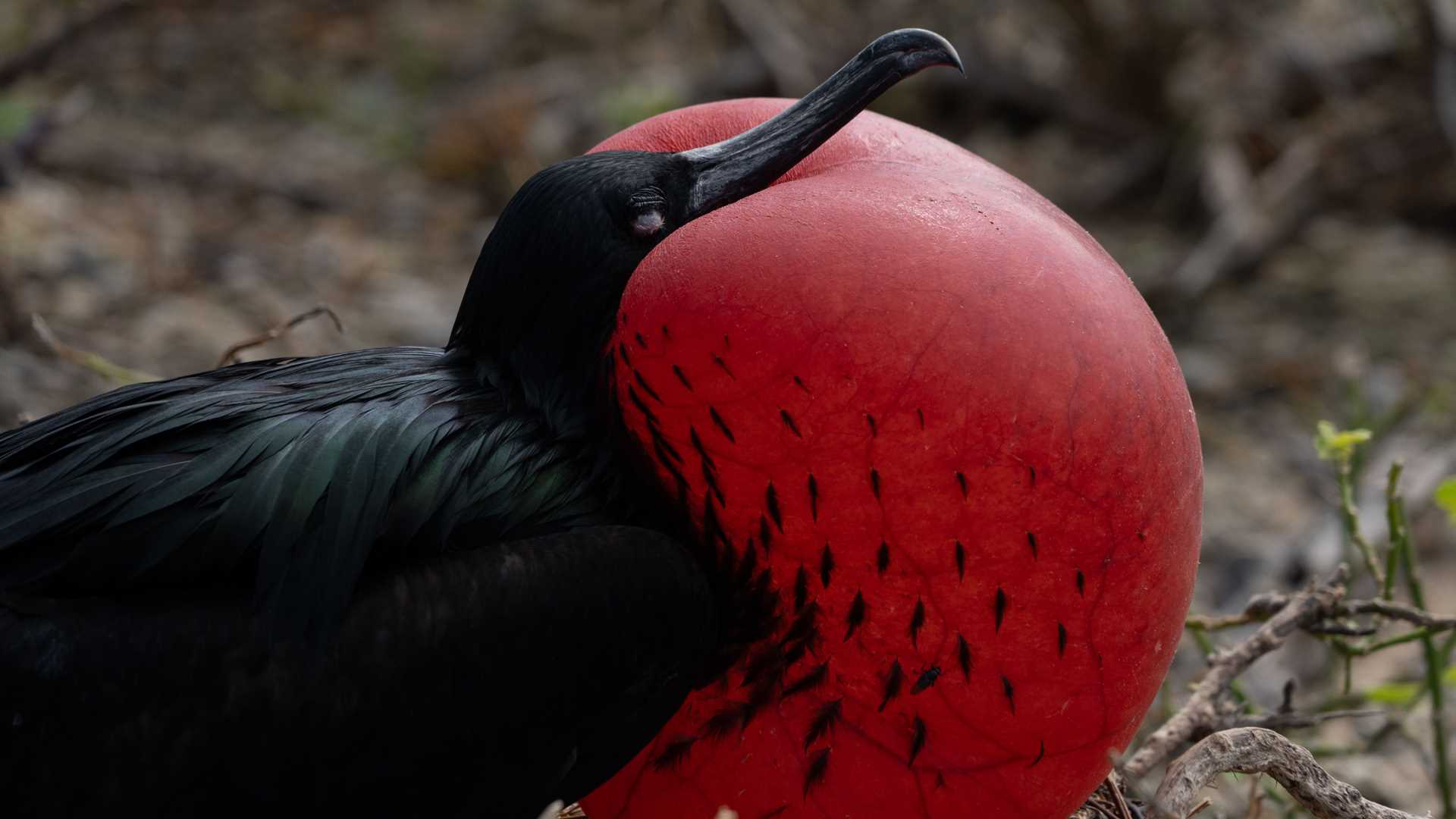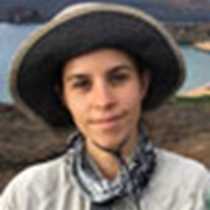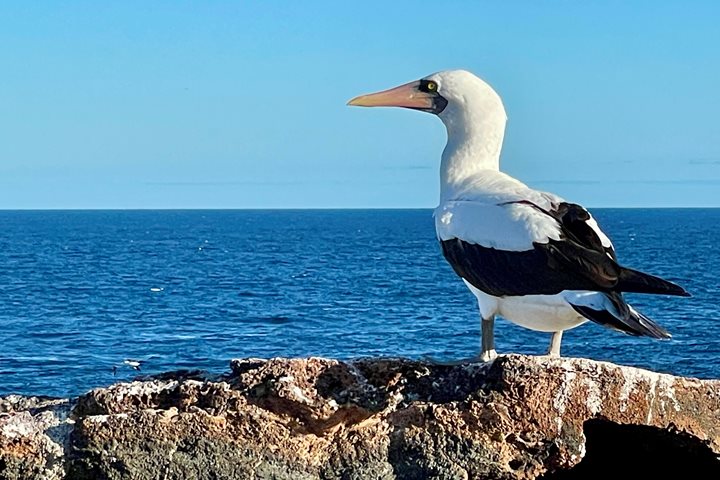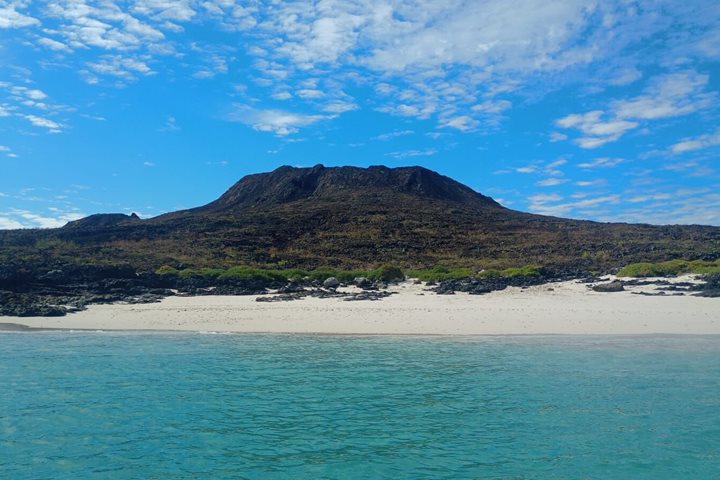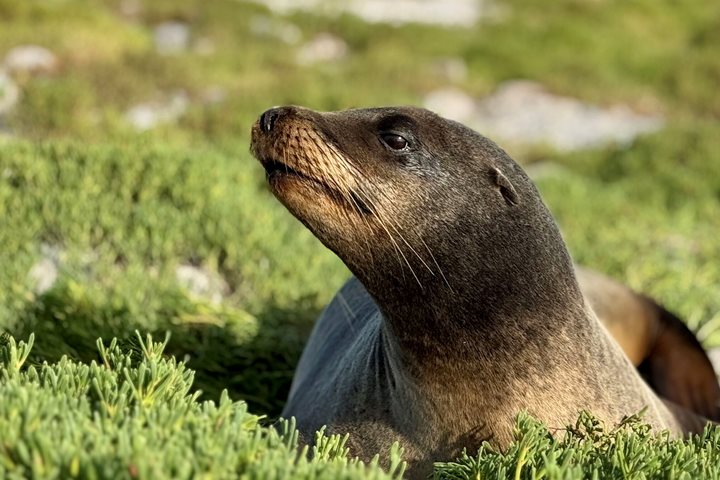Our day began with a wet landing on the coral sand beach of Darwin’s Bay. As we set foot on Genovesa Island — a remote, horseshoe-shaped volcanic caldera in the northern Galápagos — we were immediately immersed in one of the most unique seabird nesting sites in the archipelago. We observed nesting colonies of red-footed boobies, while nearby Nazca boobies and frigatebirds added to the morning spectacle with their calls and displays. The males of the latter species inflated their bright red gular sacs, hoping to attract mates.
In the afternoon, we conducted a dry landing at Prince Philip’s Steps, named after the late Duke of Edinburgh, who visited this area in the 1960s. A staircase carved into the cliff led us up to a plateau of sparse Palo Santo forest and a dramatic lava field. This site offered a different ecological setting, where we encountered numerous storm petrels fluttering low over the terrain. These birds are a key reason for visiting this area, as they attract one of the Galápagos’ more elusive predators: the short-eared owl. We were fortunate to spot one of these cryptic hunters nestled among the rocks, a rare and memorable highlight.

